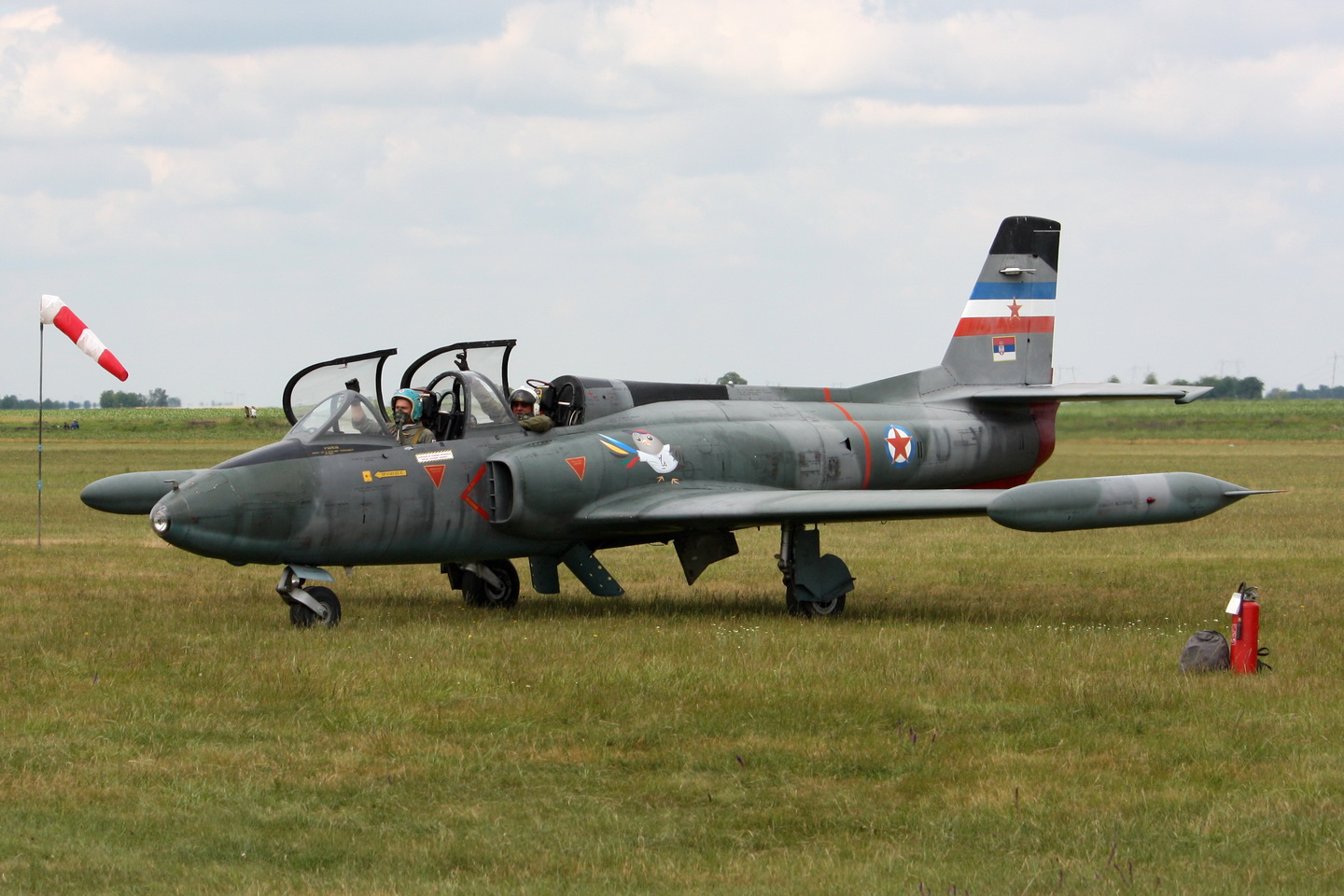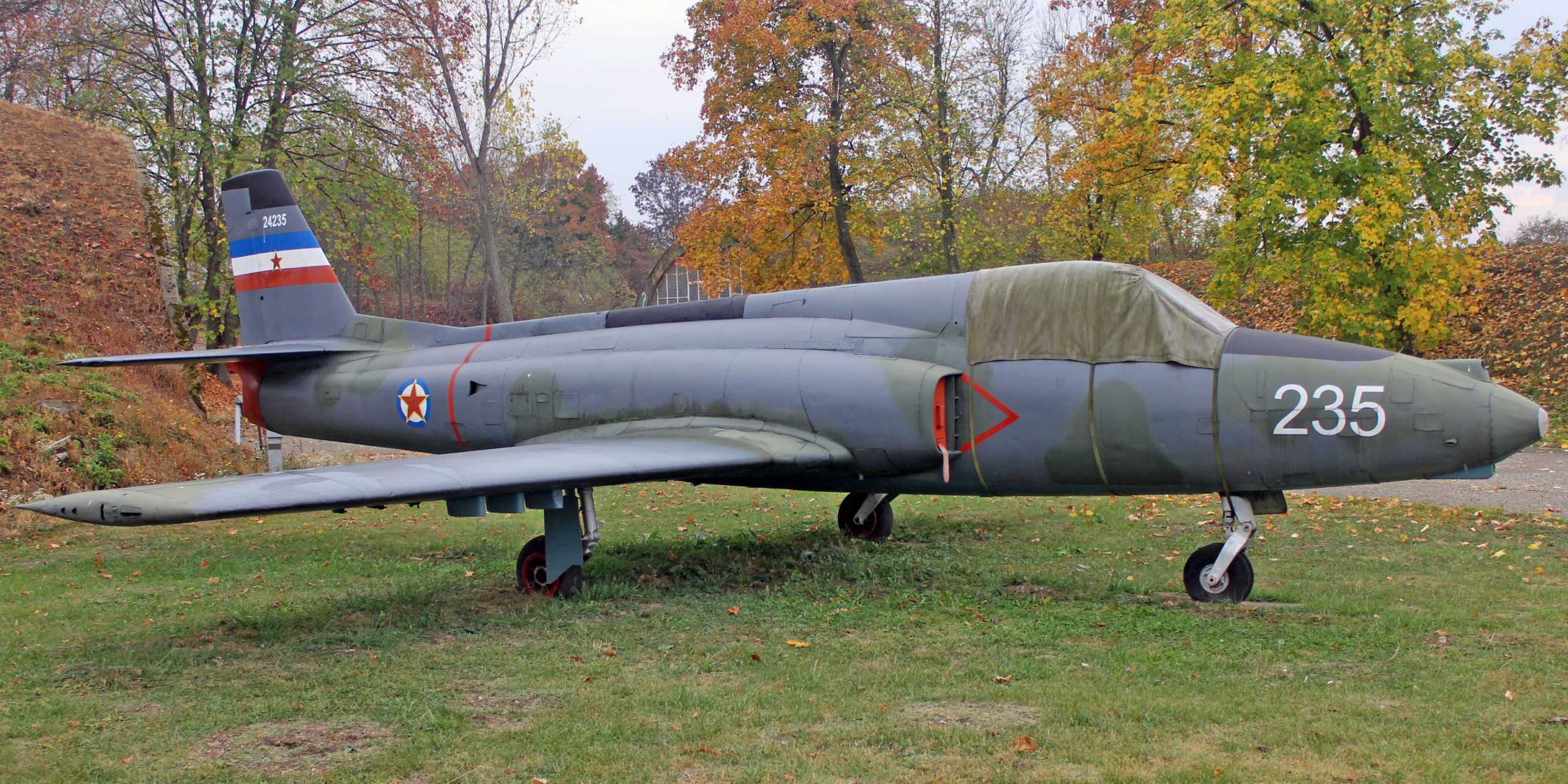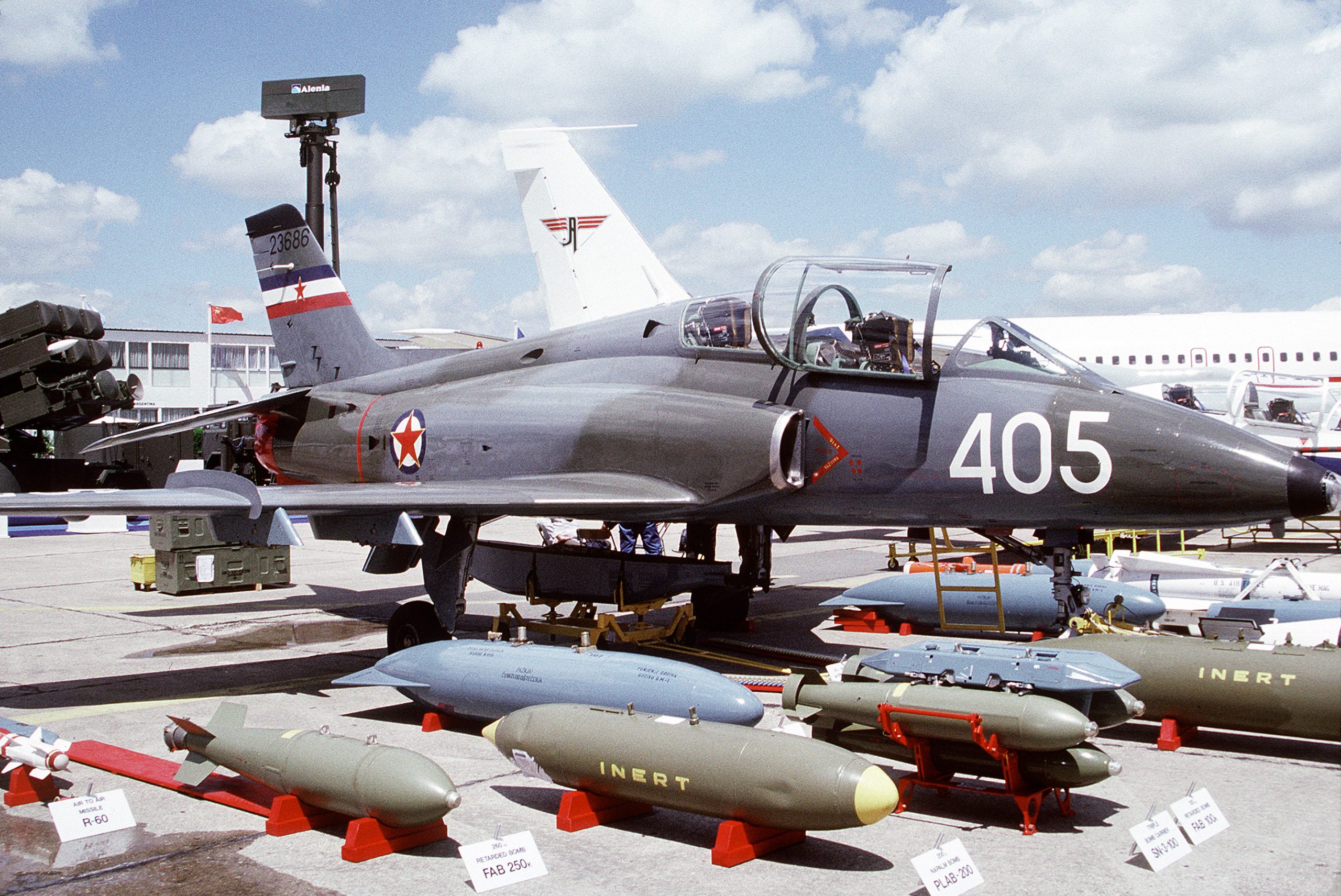The Soko G-2 Galeb, also known as the Seagull, was a Yugoslav aircraft designed as a jet trainer and light ground-attack aircraft. Developed in the 1950s by the Aeronautical Technical Institute at Žarkovo, it was intended to replace the Lockheed T-33 used by the Yugoslav Air Force. Production commenced in 1965 at the Soko aircraft factory in Mostar and concluded in 1985, with 248 aircraft manufactured. Notably, the G-2 Galeb was the first mass-produced jet aircraft in socialist Yugoslavia and served as the foundation for the single-seat ground-attack J-21 Jastreb.
Introduction
The Air Force Academy, operated by the RV (Air Force) and PVO (Anti-aircraft Defence), received 128 G-2 aircraft for training. Libya became the second-largest operator of the Galeb, acquiring over 100 units in the 1970s. Additionally, a small number of aircraft were obtained by Zaire, Zambia, and Indonesia. During the dissolution of Yugoslavia, the Galebs were employed for ground attack missions in Croatia, Bosnia, and Herzegovina. By 1992, the RV and PVO G-2s were relocated to Serbia and Montenegro, where they were utilized by the Air Force of the newly formed Federal Republic of Yugoslavia.
The Galeb remained in active service until 1999 when most of the aircraft were destroyed on the ground during the NATO bombing of Yugoslavia. The Libyan Air Force’s G-2s were deployed by Gaddafi forces during the Libyan Civil War, with an unknown number surviving the conflict and reportedly remaining in service as late as 2013. Presently, only one Galeb aircraft is operational, serving with the Technical Test Center of the Serbian Armed Forces. Several aircraft are still flown by civilians as warbirds, including the private aerobatic team “Stars” based in Novi Sad.
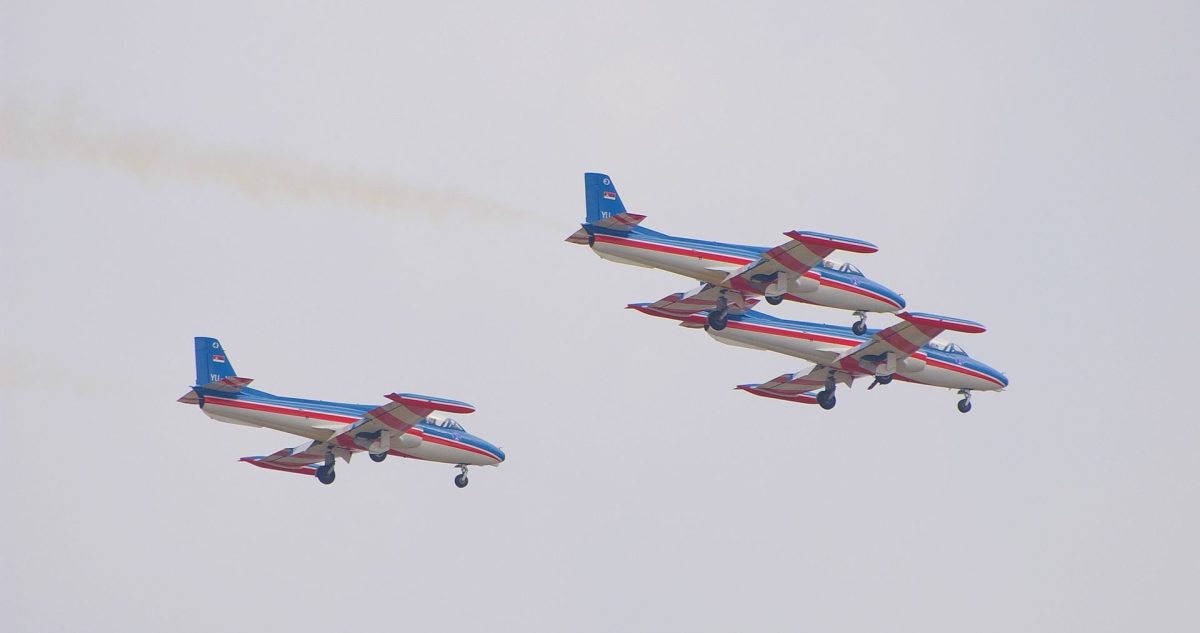
Development
In 1957, Yugoslavia’s Aeronautical Technical Institute (VTI) initiated the design of an aircraft known as the Galeb. The primary objective behind its development was to create a domestically produced replacement for the Lockheed T-33 Shooting Star, an American jet trainer widely used by the Yugoslav Air Force at that time. The Galeb was intended to fulfill the diverse requirements of ab initio, intermediate, and advanced instructional training missions.
The manufacturing of the G-2 Galeb was primarily carried out by SOKO, a Yugoslav aircraft manufacturer based in Mostar, Bosnia and Herzegovina. SOKO, established in 1951, collaborated with the United Kingdom on developing Galeb. British aerospace manufacturers played a significant role in producing various components and ancillary equipment for the aircraft, including the powerplant, ejector seats, and navigational fittings. This collaboration significantly contributed to the export value of the UK’s aerospace industry. British equipment on the Galeb played a decisive role in its appearance at the 1968 Farnborough Airshow.
Rolls-Royce Limited, a British engine manufacturer, sponsored the development of the G-2 Galeb and provided the Armstrong Siddeley Viper turbojet engine to power the aircraft. The selection of the Viper engine was motivated by the need for a simple and robust powerplant that would be easy to service and capable of withstanding the rough handling often experienced during flight training. Additionally, the engine needed to be easily installable within the airframe and have moderate turbine inlet temperatures.
Two prototype aircraft were built for G-2 Galeb’s flight test program. The prototype’s maiden flight, Galeb 1, took place on July 3, 1961, under the command of test pilot Captain Ljubomir Zekavica. The primary difference between Galeb 1 and the subsequent Galeb 2 was the number of rubber tanks in the fuselage. Galeb 1 had three, while Galeb 2 incorporated two fuselage and two wingtip tanks. Completing a full-size wooden mock-up led to the construction of the second prototype, officially designated Galeb 2, which established the G-2 type designation.
During flight tests, the G-2 Galeb achieved a maximum speed of 812 km/h (440 kt) at 6,200 m (20,100 ft) in a clean configuration, devoid of paint, and with a polished airframe. Its top diving speed reached Mach 0.81, attainable during a long dive from a high altitude. According to Captain Dusan Krvavica, Soko’s chief test pilot, the Galeb was an “unfatiguing and easy to fly” aircraft. Other notable attributes included docile stall characteristics and the ability to land at conservative speeds.
The G-2 Galeb first appeared outside Yugoslavia at the 1963 Paris Air Show. In 1964, production of the G-2 commenced, marking it as the first domestically developed jet aircraft to enter mass production in Yugoslavia. (The Ikarus 451M, Yugoslavia’s first jet-powered aircraft, built in 1952, did not enter production.) Following the Soko 522, the Galeb became the second aircraft manufactured by SOKO. The initial production series, designated G-2A and known as the N-60 within the Yugoslav military, was entered into the Yugoslav Air Force’s aircraft register on July 30, 1965. The last G-2A was registered on January 6, 1981. Production of updated aircraft for export to Libya continued until mid-1983. SOKO produced 248 Galeb aircraft, with 132 used by the Yugoslav Air Force.
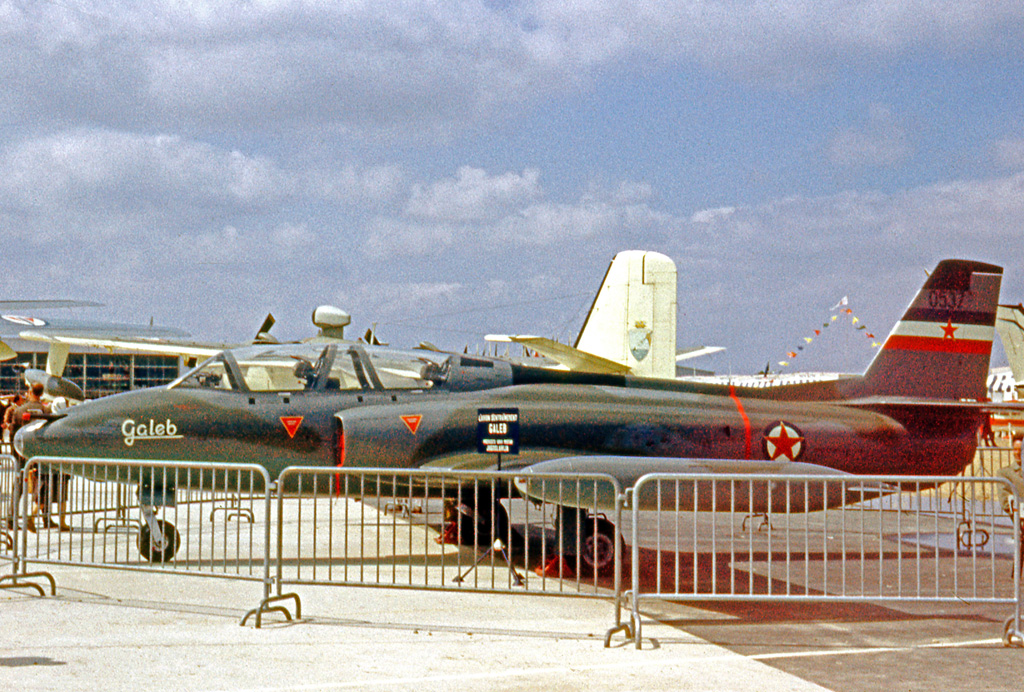
Design
The G-2 Galeb is a versatile trainer aircraft designed to fulfill a wide range of training missions, reducing the aircraft required for an operator’s overall training needs. It is a two-seater aircraft with a tandem cockpit configuration, typically seating a candidate pilot in the forward position and an instructor behind. Both crew members are equipped with Folland Type 1-B lightweight ejector seats. Powering the Galeb is a single Armstrong Siddeley Viper II Mark 22/6 turbojet engine, capable of delivering up to 2,500 pounds of thrust.
The Viper engine, as noted by Flight International, enables the Galeb to achieve rapid and stall-free acceleration in all conditions. The aircraft features a conventional stressed-skin construction utilizing frames and bulkheads. The rear fuselage, which connects to the main fuselage just behind the cockpit canopy, allows easy access to the engine and surrounding components. The forward fuselage contains the tandem cockpit, integral center section, and most systems. Tail unit pick-up points are located on the rear fuselage bulkhead.
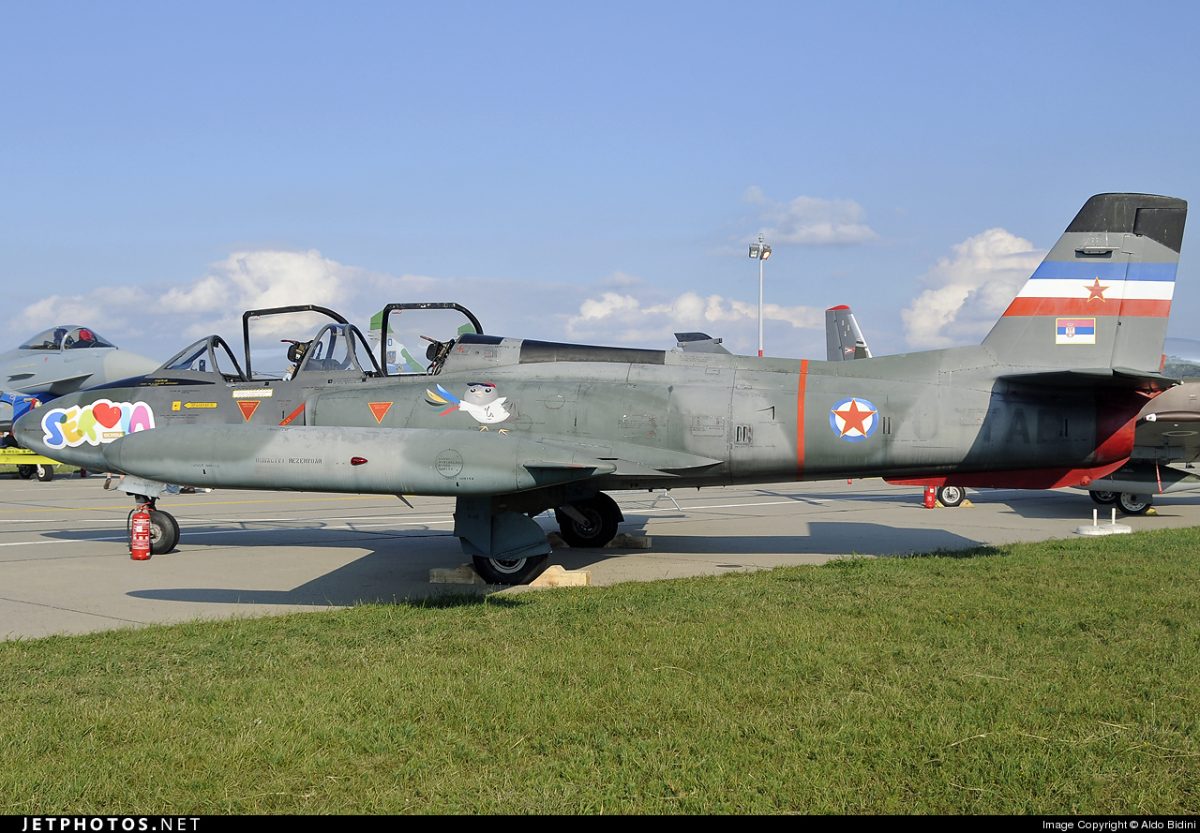
The G-2 Galeb has an all-metal straight wing, incorporating tip tanks. Unlike typical designs, the landing gear retracts into the wings rather than the fuselage. The hydraulic system comprises an engine-driven hydraulic pump, a hydraulic reservoir/accumulator, and a filter. The electrical systems include a 24-volt battery, a high-energy ignition system, a generator, landing and taxi lamps, navigation lighting, and an anti-collision beacon. Pneumatic systems consist of a bleed air compressor, de-icing/de-misting measures, and elements of the environmental control system.
Since the G-2 Galeb lacks a pressurized cabin, its practical ceiling ranges between 7,000 meters (22,800 feet) and 9,000 meters (29,000 feet). Soko developed a pressurized cabin by 1968, which was made available to customers. The aircraft was designed to meet the Air Force’s requirement for a trainer with secondary combat capabilities and the ability to operate from unprepared runways. The designers incorporated landing gear strong enough to handle carrier landings to address this. The focus on safe training operations and forgiving landings led to the decision to retract the wheels into the wings, resulting in a heavier, straight wing that is less prone to stalling upon landing but restricts supersonic flight.
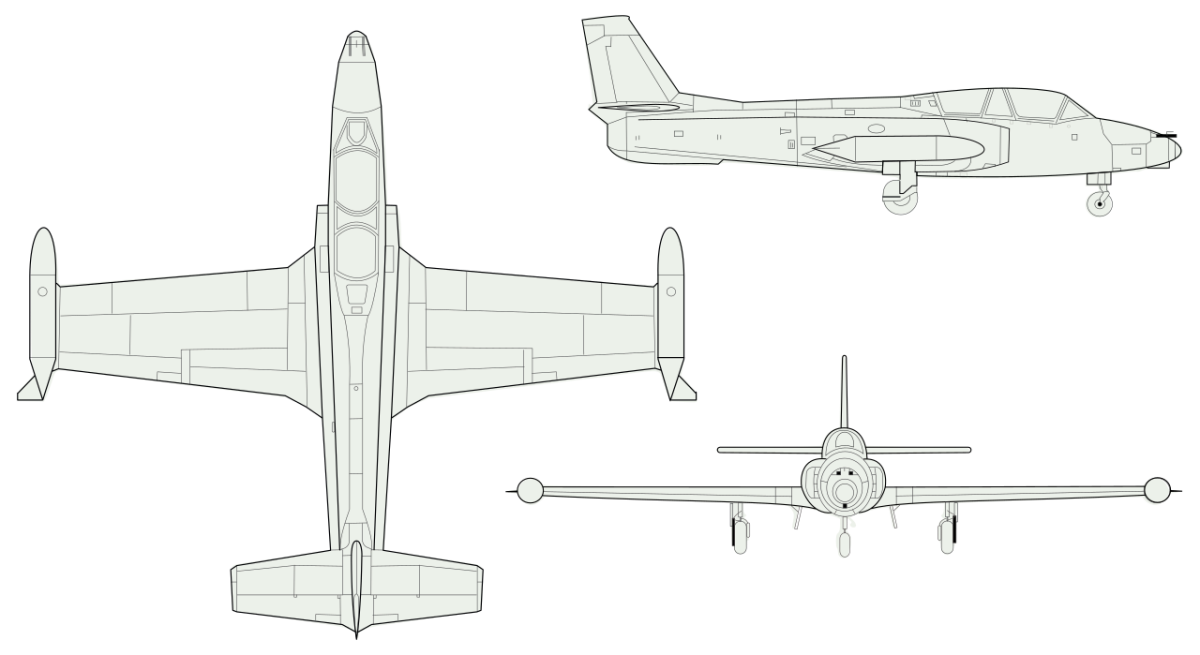
The G-2 Galeb, primarily designed as a trainer, shares many similarities with the ground attack-oriented Soko J-21 Jastreb. Aside from airframe strengthening, one key distinction is the absence of a rear cockpit in the J-21 Jastreb. Instead, this area is covered by a fairing, housing avionics, and other aircraft equipment. While primarily a training aircraft, the Galeb can also perform ground attack missions, as it is equipped with underwing hardpoints compatible with various munitions such as bombs and rockets. Additionally, it can be fitted with 12.7mm machine guns and camera equipment for reconnaissance missions.
Operational history
The G-2A Galeb was the standard version operated by the Yugoslav Air Force, primarily utilized for school-combat training of VVA (Military Air Force Academy) cadets. Consequently, the largest number of these aircraft was stationed within the VVA units, and by 1968, Galeb was reportedly employed for training most of the Yugoslav Air Force’s pilots.
The aircraft was known for being exceptionally easy to handle and forgiving during flight while requiring straightforward maintenance. This made it popular among students and technicians alike. Many G-2A Galeb accumulated substantial flight hours, with some reaching 5,000 hours in the air. For instance, the G-2 Galeb displayed in the Yugoslav Aeronautical Museum had logged 6,200 hours.
An export variant known as the G-2AE became available in late 1974, specifically built for countries such as Libya and Zambia. In the early 2000s, a Serbian jet display team called The Stars (Zvezde) was formed. They made their international debut at the Air Borne 2007 airshow in Rakica, utilizing a fleet of four G-2 Galebs.
Bosnian War
During the Bosnian War, the G-2A Galeb was extensively employed by the 105th Fighter-Bomber Regiment of the Yugoslav Air Force over Bosnia-Herzegovina. United Nations personnel stationed in Croatia observed multiple Galebs departing from Udbina, a Serb-controlled area, to carry out strike missions.
First Congo War
With the First Congo War, reports suggest that Yugoslavia and France supported Mobutu’s government. Yugoslavia allegedly dispatched three J-21 Jastreb, one G-2 Galeb aircraft, and four MiG-21PFMs. The fate and utilization of these aircraft after they arrived in Zaire in late 1996 and 1997 remain largely unknown. However, it is known that one Mi-24 helicopter crashed, killing the crew and passengers, while a J-21 Jastreb crashed during a low-level pass, resulting in casualties among soldiers in a parade.
Libya
The Libyan Air Force was a significant operator of the G-2 Galeb, with approximately 80 aircraft in its inventory as of 2002. During the 2011 Libyan civil war, forces loyal to Colonel Gaddafi extensively used the Galeb for ground attack missions against rebel forces. Several G-2 Galebs were destroyed, including one by a French Air Force Dassault Rafale and five more reportedly destroyed by French combat aircraft, although later evidence indicated that these were Mikoyan-Gurevich MiG-23 fighters.
In the current Second Libyan Civil War, Islamist forces from Libya Dawn are said to have two to four Galebs in service, although their operational status remains uncertain.
Warbird
The G-2 Galeb has also gained popularity as a warbird. Before the Yugoslav Wars, several Galebs were purchased by American warbird dealers, and some remain on the civil register today. Other aircraft operators are Indonesia, Serbia, New Zealand, Slovenia, and the United States. The Galeb was also featured in air combat scenes in “Aces: Iron Eagle III.”
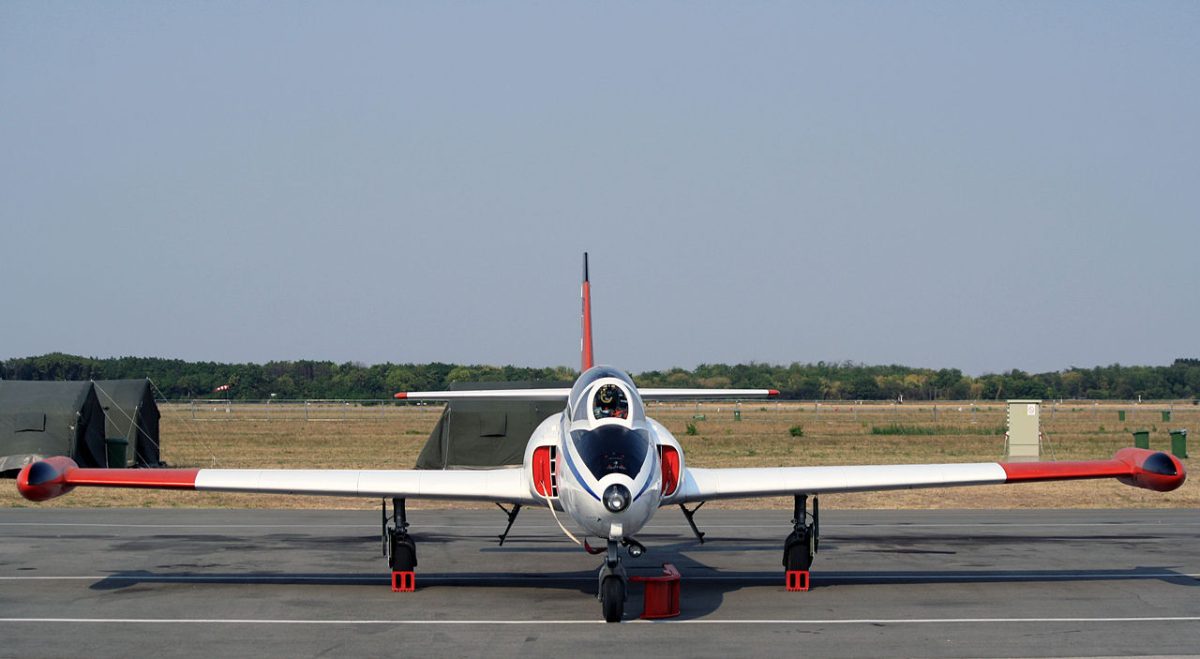
Variants
G-2A
The G-2A variant of the Galeb is a two-seat advanced jet trainer and light attack aircraft. It was designed to fulfill the role of training pilots in advanced aviation techniques capable of carrying out light attack missions.
G-2AE
The G-2AE is a two-seat export version specifically developed for countries like Libya and Zambia.
G-2Š
The G-2Š model, on the other hand, is an unarmed trainer variant of the Galeb, primarily used for training purposes.
G-3 Galeb
The G-3 Galeb is a prototype of an export version, which made its first flight on August 19, 1970. It featured several modifications, including the installation of the BMB (Rolls-Royce/Bristol Siddeley) Viper Mk 532 Turbojet engine sourced from the J-21 Jastreb, a modern cockpit, cameras in the tip-tanks, doubled weapon load capacity, JATO (Jet-Assisted Take-Off), and other alterations.
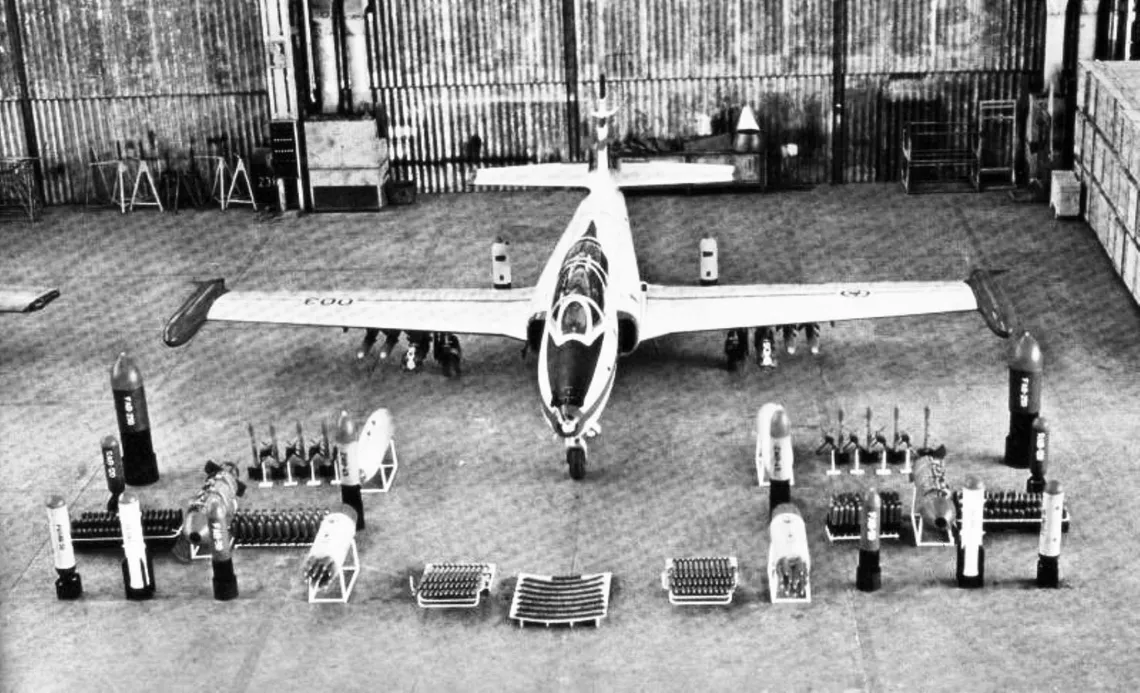
Technical specifications
| Country of origin: | Yugoslavia |
| Manufacturer: | Soko, Mostar, Yugoslavia |
| Type: | Basic trainer / light attack aircraft |
| Introduced into the service: | July 30, 1965 |
| Max speed: | 439 kt / 505 mph |
| Max range: | 1,240 km / 771 miles |
| Dimensions: | span 9.73 m / 31 ft 11.1 in length 10.34 m / 33 ft 11.1 in height 3.28 m / 10 ft 9.1 in |
| Weight: | empty 2,620 kg / 5,776 lb |
| Maximum take-off: | 4,300 kg / 19,480 lb |
| Engine: | one 1134-kg (2,500-lb) dry thrust Rolls Royce Viper 11 Mk 226 turbojet |
| Armament: | two 12.7-mm (0.5-in) machine gun with 80 rounds per gun; provision for 150-kg (331-Ib), bomblet containers, 100-kg (220-lb) bombs, 127-mm (5-in) rockets, and 55-mm (2,17-in) rocket-launcher pods carried on underwing racks |
| Operators | Yugoslavia, Serbia, Libya, Zambia |
